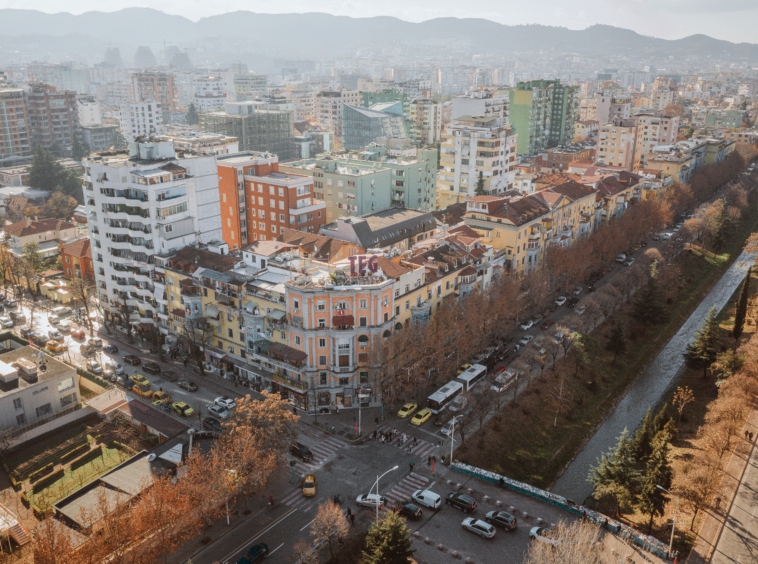Agimi” Residences
Details
Updated on December 30, 2024 at 12:36 pmInformation
- Author: Skënder Kristo Luarasi
- Year Built: 1951-1953
Description
The “Agimi” Residences were constructed between 1953 and 1955 as an extension of the Shallvare buildings, located on the opposite side of the Lana River. These residences reflect the architectural and urban planning ideologies of mid-20th-century Albania, heavily influenced by Soviet totalitarian style.
Historical Context
Built on newly available land following the completion of the Shallvare complex, the Agimi residences were envisioned as part of a cohesive urban expansion to meet the housing demands of Tirana’s growing population. Their placement parallel to the Shallvare buildings created a visual and conceptual continuity across the Lana River, emphasizing uniformity in the city’s urban landscape.
Architectural Features
The architectural concept of the Agimi residences mirrors that of the Shallvare buildings, employing a Rationalist style influenced by Soviet totalitarianism.
- Continuous Shaped Entity:
The buildings were designed as a cohesive entity, with uniformity in shape and style to create a harmonious architectural ensemble. - Façade Design:
The façades are characterized by superimposed orders, including columns, installations, and frames that stand out in volume and color from the surrounding walls. This decorative treatment added a formal elegance to the otherwise utilitarian structures. - Ground Floor:
The ground floor features a high plinth with horizontal stripes, providing a sense of stability and monumentality. - Balconies and Windows:
Balconies were adorned with balusters, adding a classical touch to the design. However, the windows were kept small due to the brick retaining walls, prioritizing structural stability over natural light.
Interior Design and Quality
Behind the striking façade lies modest apartments characterized by simple layouts and limited space. The materials used for construction were basic, reflecting the economic constraints and utilitarian focus of the era.
Evolution and Modifications
Since the 1990s, the Agimi residences have undergone numerous changes, driven by the needs of their inhabitants and the city’s evolving urban landscape. These modifications include alterations to facades, balconies, and interior spaces, reflecting the challenges of preserving mid-20th-century architectural heritage while adapting to contemporary lifestyles.
Cultural and Historical Significance
The Agimi residences stand as a testament to Tirana’s mid-century urban development and the pervasive influence of Soviet architectural principles during Albania’s socialist period. Their design captures the era’s emphasis on uniformity, monumentalism, and functionality, while their continued use highlights their enduring relevance in the city’s housing landscape.
Legacy
The Agimi residences, like their Shallvare counterparts, are an integral part of Tirana’s architectural history. They offer insights into the city’s socio-political context during the 1950s, serving as a bridge between the aspirations of the socialist state and the realities of urban living.
Address
Open on Google Maps- City Tirana








